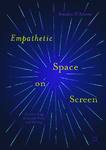Empathetic Space on Screen
Abstract
In cinema and television empathetic settings stand out above all others.1
Think of the now iconic gooey dripping tunnels that Ripley stumbles
through in Aliens (1986; see Fig. 1.2), or the delightful melancholic
wonderland of Paris so winningly animated by the winsome protagonist
of Amelie (2001) (Fig. 1.1). Other examples come to mind—the sewers
of The Third Man (1949), or Norman’s bird-decorated parlor in
Psycho (1960), or the dark Gotham of certain Batman movies, or certain
moments in Homeland (2011–), Mad Men and other television shows.
Because we lack a clear account of the power of setting and space we
are reduced to describing such narratives as ‘atmospheric’, ‘emotionally
moody,’ or perhaps somehow illustrating a ‘romantic aesthetic’, but
can we define them more concretely? Why do these settings stand out
so memorably in narrative history when so many others, however spectacular
and breathtaking and adrenalynic, start to fade from our view as
the end-credits roll up? Could we dissect their craft and story techniques,
show an underlying unity and even illustrate how and why they differ
from other uses of narrative space? In short, what makes these particular
spaces so powerful and iconic?
Collections
- School of Education [17]

